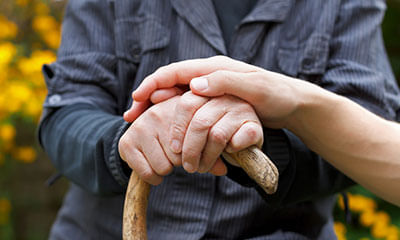Parkinson's Disease: Dos and Don'ts
Parkinson’s disease affects the part of the brain that controls muscle movement. The exact cause of this disease is not known, but there is a decrease in a chemical called dopamine in the brains of people with parkinson’s. There is no cure for parkinson’s, but it often progresses slowly and the signs can be managed.
Signs
The 4 most common signs of parkinson’s are:
• tremors or shaking when at rest
• muscle stiffness
• slowed movement or problems starting movement
• problems with balance and movement
As these signs worsen, you may also have trouble walking, talking, swallowing or doing simple tasks such as bathing or dressing. As the disease progresses, other signs such as pain, bowel or bladder problems and sleep problems may occur.
Your care
When you start to show signs of this disease, your doctor may order anti parkinsonian medicines or may also suggest some physical therapy to help manage your signs. The physical therapist can help you learn exercises, prescribed by a physiatrist, that can help you with movements.
You may need to work with your doctor to make adjustments in your medicines to keep your signs controlled. Over time, many people have side effects from the medicines used to treat parkinson’s disease, but they can be managed well.
You may also need occupational therapy or speech therapy to deal with signs as the disease progresses. As your signs get worse, surgery may be an option to reduce tremors.
Things you can do to manage your signs
When walking
• walk slowly with a straight posture and with your legs further apart. Think about taking big steps to help keep your steps more normal.
• use a 4-prong cane or a walker if needed.
• if you become stuck or freeze in one place, rock gently from side to
Side or pretend to step over an object on the floor.
• place tape strips on the floor to guide you through your house.
Remove area rugs and furniture from your walking path.
• stand up from a chair or bed slowly to avoid feeling dizzy or
Lightheaded.
When using the bathroom
• install grab bars on the walls, beside toilets and inside showers and bathtubs to help you stand up.
• use a shower chair inside the shower.
• install an elevated toilet seat to make standing up easier after using the toilet.
• shave with an electric razor.
When dressing
• wear loafers or shoes with velcro.
• wear simple dresses or pants with elastic waistbands such as sweatpants.
When eating or drinking
• use a cup with a large handle to make it easier to hold.
• use a bowl instead of a plate to limit spills and make it easier to scoop up food.
Work closely with your health care team to manage your signs of parkinson’s disease.



+1.svg)
